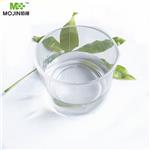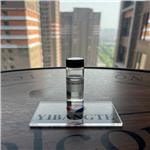- 1-Nonanol
-

- $0.00 / 25KG
-
2023-11-13
- CAS:143-08-8
- Min. Order: 1KG
- Purity: 99%
- Supply Ability: 50000KG/month
- 1-Nonanol
-

- $0.00 / 1kg
-
2023-11-02
- CAS:143-08-8
- Min. Order: 1kg
- Purity: 99%
- Supply Ability: 50000kg
- 1-Nonanol
-

- $0.00 / 1KG
-
2023-09-06
- CAS:143-08-8
- Min. Order: 1KG
- Purity: 99%
- Supply Ability: 500000kg
|
| | 1-Nonanol Basic information |
| | 1-Nonanol Chemical Properties |
| Melting point | ?8-?6 °C (lit.) | | Boiling point | 215 °C (lit.) | | density | 0.827 g/mL at 25 °C (lit.) | | vapor density | 5 (vs air) | | vapor pressure | 13 mm Hg ( 104 °C) | | FEMA | 2789 | NONYL ALCOHOL | | refractive index | n20/D 1.433(lit.) | | Fp | 208 °F | | storage temp. | Store below +30°C. | | solubility | 69.54mg/l | | form | Liquid | | pka | 15.22±0.10(Predicted) | | color | Clear colorless | | Odor | Rose-citrus. | | Odor Threshold | 0.0009ppm | | explosive limit | 0.80-6.10%(V) | | Odor Type | floral | | Water Solubility | 1 g/L (20 ºC) | | Merck | 14,6679 | | JECFA Number | 100 | | BRN | 969213 | | Dielectric constant | 8.8300000000000001 | | Stability: | Stable. Combustible. Incompatible with strong oxidizing agents. | | LogP | 4.59 at 20℃ | | CAS DataBase Reference | 143-08-8(CAS DataBase Reference) | | NIST Chemistry Reference | 1-Nonanol(143-08-8) | | EPA Substance Registry System | 1-Nonanol (143-08-8) |
| | 1-Nonanol Usage And Synthesis |
| Description | 1-Nonanol is a straight chain fatty alcohol with nine carbon atoms and the molecular formula CH3(CH2)8OH. It is a colorless to slightly yellow liquid with a citrus odor similar to citronella oil. Nonanol occurs naturally in the orange oil. The primary use of nonanol is in the manufacture of artificial lemon oil. Various esters of nonanol, such as nonyl acetate, are used in perfumery and flavors. Nonanol floats on water and its freezing point 23°F. | | Chemical Properties | 1-Nonanol is a colourless to light yellow liquid that has a characteristic rose-orange odor and a slightly fatty, bitter taste reminiscent of orange. It can be found in several citrus oils. | | Occurrence | Reported as occurring frequently in nature, free or esterified; in the essential oils of grapefruit, Guinea sweet
orange, Italian and Israeli sweet orange, bitter orange; and in oak musk concrete. Also reported found in apple, citrus juices, many
berries, currants, guava, grapes, papaya, melon, pineapple, asparagus, cucumber, leek, peas, potato, cheeses, butter, milk, cooked
chicken, beef and pork, hop oil, beer, rum, grape wines, tea, pecan, peanut oil, soybean, olive, plum, rose apple, beans, mushroom,
starfruit, cauliflower, tamarind, fig, cardamom, rice, prickly pear, sweet corn, malt, cherimoya, clary sage, oysters, crab, crayfish,
clam, nectarine, mate, pepino fruit (Solanum muricatum), apricot, tobacco, and wheat bread. | | Uses | 1-Nonanol is an chain fatty acid alcohol that naturally occurs in oil of orange. 1-Nonanol is used in the manufacture of artificial lemon oil. | | Production Methods | 1-Nonanol is produced by the high-pressure catalytic reduction
of esters of pelargonic acid. | | Definition | ChEBI: Nonan-1-ol is a fatty alcohol consisting of a hydroxy function at C-1 of an unbranched saturated chain of nine carbon atoms. It has been isolated as a component of volatile oils from plants like Hordeum vulgare. It has a role as a plant metabolite and a volatile oil component. It derives from a hydride of a nonane. | | Preparation | 1-Nonanol can be synthesized by reduction of ethyl pelargonate; from heptaldehyde via heptanol and heptylmagnesium bromide with ethylene oxide. | | Aroma threshold values | Detection: 50 to 90 ppb; aroma characteristics at 1.0%: intensely waxy, sweet, green, citrus, orange-like,
creamy with fruity nuances of tamarind and melon. | | Taste threshold values | Taste characteristics at 0.5 to 1.0 ppm: waxy, green, coconut, cheese, milky and creamy with citrus orange
nuances. | | Synthesis Reference(s) | Tetrahedron Letters, 32, p. 4235, 1991 DOI: 10.1016/S0040-4039(00)92136-1 | | General Description | Colorless liquid with a rose or fruity odor. Floats on water. Freezing point 23°F. | | Reactivity Profile | 1-Nonanol is an alcohol. Flammable and/or toxic gases are generated by the combination of alcohols with alkali metals, nitrides, and strong reducing agents. They react with oxoacids and carboxylic acids to form esters plus water. Oxidizing agents convert them to aldehydes or ketones. Alcohols exhibit both weak acid and weak base behavior. They may initiate the polymerization of isocyanates and epoxides. | | Health Hazard | Liquid irritates eyes. | | Flammability and Explosibility | Not classified | | Safety Profile | Mddly toxic by
ingestion, skin contact, and inhalation.
Experimental reproductive effects.
Combustible liquid. When heated to
decomposition it emits acrid smoke and
irritating fumes. See also ALCOHOLS. | | Metabolism | See alcohol C-8. Nonanol, like other primary alcohols, undergoes two general reactions in vivo. The first is oxidation to the carboxylic acid derivative and next the direct conjugation with glucuronic acid. It was reported that nonanol undergoes direct glucuronic conjugation to the extent of 4.1%. This oxidation proceeds with very little inhibition as opposed to that shown by methyl amyl alcohol and 2-ethyl butyl alcohol which form ester glucuronides. | | References | 1.https://en.wikipedia.org/wiki/1-Nonanol
2. https://pubchem.ncbi.nlm.nih.gov/compound/1-Nonanol#section=Non-Human-Toxicity-Values |
| | 1-Nonanol Preparation Products And Raw materials |
|